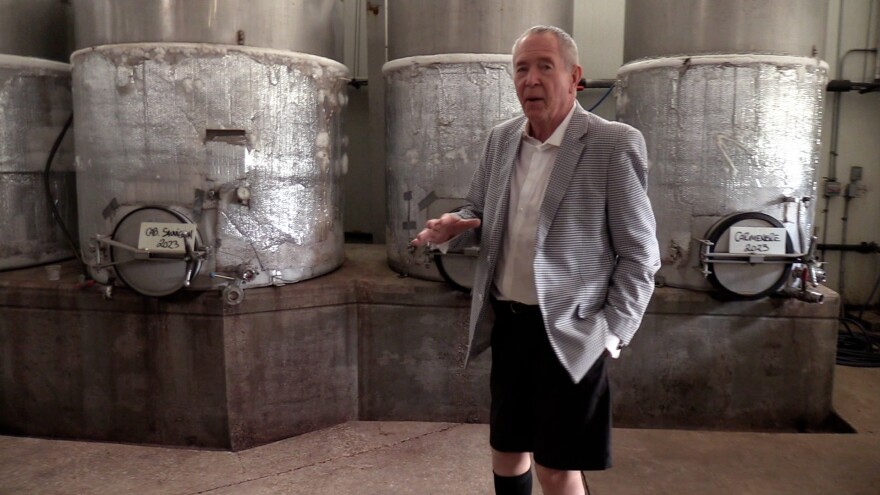The Rio Grande is once again flowing down from Colorado through Southern New Mexico. But the water currently running is destined for use in Mexico and Texas, while New Mexico’s irrigation season won’t begin until June, as announced by the Elephant Butte Irrigation District.
Farmers in the Mesilla Valley have historically been reliant on river water for crops, but the ongoing drought has led many to dependence on groundwater. Ken Stark, owner of La Viña Winery in Southern Doña Ana County, explained that even the well-pumped water is at risk due to the lack of moisture that’s stricken the area.
“It’s a scary feeling because my well was drilled back in the 1950s originally. So, in those days, they didn’t drill irrigation wells but a couple hundred feet deep,” he said. “The guys that are putting in wells, in the last ten years especially, most of them have been people that farm pecans, and they’re putting wells in that are 500 to 1000 feet deep. And these old wells like mine at some point in time are going to be too shallow.”
Stark has implemented an underground drip-system in his vineyard as a water-saving technique. But even so, groundwater levels continue to drop as the years go on.
“Hopefully we’ll just find a way to exist in a dry climate,” Stark said. “If you look at municipalities, what they’ve done, they've curtailed their use of water a great deal. I think that helps, and the farmers conserving water like I do makes it where we can say [that] we’re doing our part, you guys do your part.”

According to the U.S. Drought Monitor, nearly the entire state of New Mexico is experiencing some level of drought conditions. This, combined with record breaking temperatures from last year has some experts concerned. Even with the evolution of agricultural practices and water-saving techniques, the fact remains that New Mexico is running out of water.
Dr. Dave DuBois is the State Climatologist for New Mexico. He said that rising temperatures linked to climate change are exacerbating water conservation efforts throughout the state.
“Our aquifer for water has done pretty good. But all of our aquifers are finite resources. And once we extract them, the recharge is very, very slow on a lot of these aquifers,” he said. “So how much water do we expect to [use] more than we are now? A lot of that’s driven by climate, because when we have warmer temperatures, our crops need more water, and when we have drought, the atmosphere is actually thirstier, meaning water is evaporating from the soils as well as evaporating from the plants themselves.”
Dr. DuBois said that there are techniques to cope with continued drought and lack of fresh water. But those techniques come with an associated cost, both environmental and monetary.
“There’s ways to manage when we don’t have water, so using different engineering technologies and methods to basically reuse it. So there’s a technological challenge, and it’s always going to yield a cost. How much are you willing to pay if you’re going to use this alternative source of water? What are the new technologies, and can we wait for those?”

Dr. Phil King is an engineering advisor for the Elephant Butte Irrigation District. In a television interview with KRWG, Dr. King said he’s optimistic about New Mexico’s water future, with implementation of legislation, and ongoing work with affected communities. But Dr. King said it’s ultimately going to take effort from all parties to get the state where it needs to be.
“I think on a global scale, things are pretty bleak. Our failure as a species to respond to climate change is disappointing,” he said. “When I look at the commitment, both in the state agencies and the communities, and in a lot of the water management entities, they are very realistic about it. They are looking to be adaptive, and I am hoping that with that mindset and a good, strong community spirit, we can move into the realities of the 21st century.”
Back down at La Viña Winery, Ken Stark said he’s doing his best to conserve the water that he has, with the hopes that the drought won’t be the end of his winery.
“Who knows when the drought is going to be over, but our water is limited. And if we all have to drink out of the same tap, sooner or later, the guys with the big straw [are] going to suck it so hard that my well’s going to be dry. I think that If we live in a more conservative way, at least it’ll last longer. That’s all you can do.”
For now, hope remains high for a strong monsoon season, with southern New Mexicans looking for respite from 2023’s record breaking temperatures.



